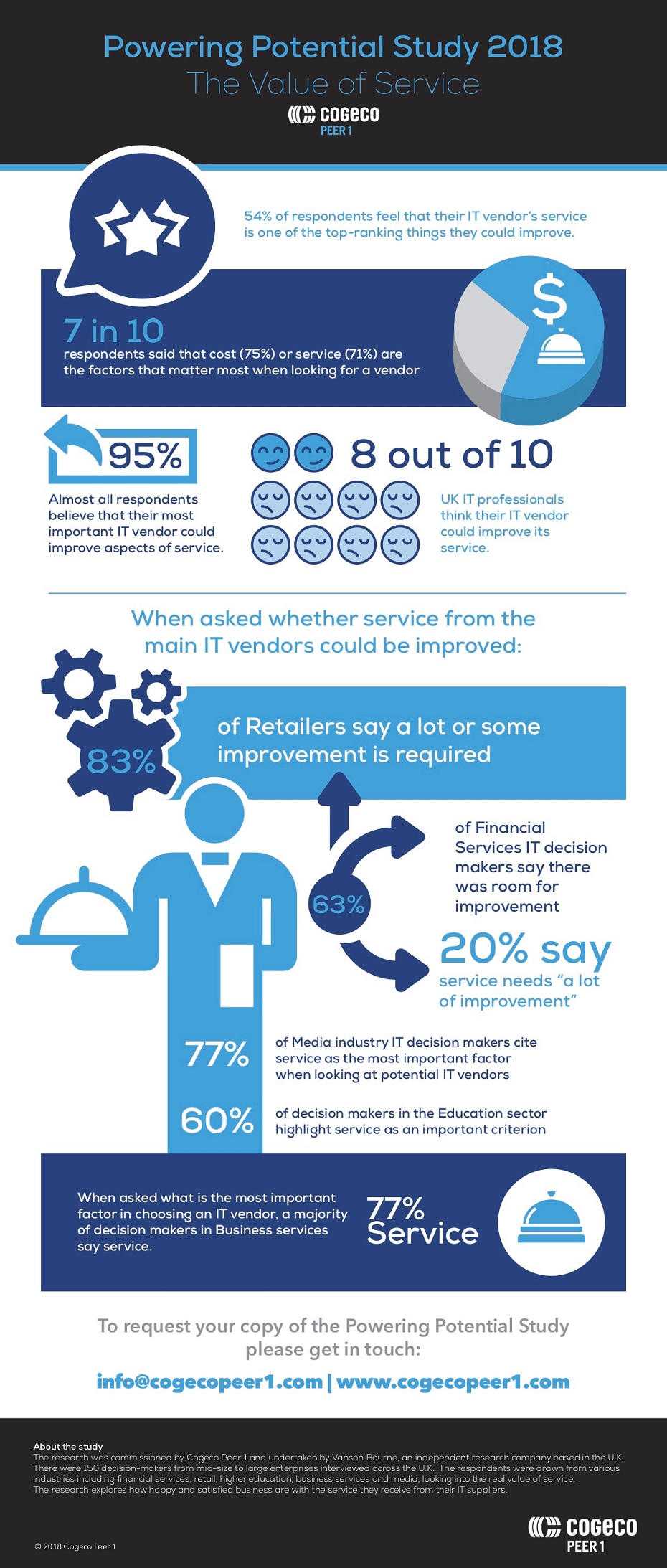Customer service is king for IT decision-makers in the UK when it comes to the key checklist of what they look for in an IT vendor, according to the 2018 Powering Potential Study by Cogeco Peer 1.
85% believe that their organization’s most prominent current IT vendor can improve its service
The vast majority of respondents (85%) believe that their organization’s most prominent current IT vendor can improve its service, with only 14% stating that they are satisfied with the current service they receive.
Furthermore, over 7 in 10 respondents stated that cost (75%) or service (71%) are in their top three factors that matter the most to their organization when looking for an IT vendor, with around a quarter (22%) saying that service is the most important factor.
The study, which surveyed 150 IT decision-makers in the UK across several different industries including financial services, retail, higher education, business services and media, looked into the real value of service and found that when it comes to pricing, businesses are not necessarily looking for those providers willing to engage in a race to the bottom. Although price does remain the main concern, and with budgets tightening, businesses are increasingly recognizing the need for strong scalability capability, to cope with the peaks and troughs they experience.
Susan Bowen, VP and General Manager, EMEA at Cogeco Peer 1 said: “Good customer service has often been overlooked in favor of competitive pricing and exciting new products in the IT market, but more and more businesses are finding the service they receive isn’t living up to their expectations or needs, as they grow. Having dedicated technical account managers, fast-turnaround on enquiries and 24/7 support can make more of a difference to their bottom line than the expertise the vendor brings or product flexibility, in a service outage or data breach situation, for instance.”
Almost all (95%) believe their IT vendor could improve in some aspect, with over half (54%) stating that their IT vendor’s service is one of the most pressing things they could improve.

